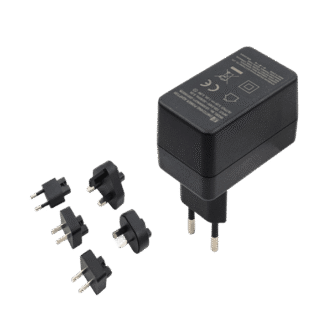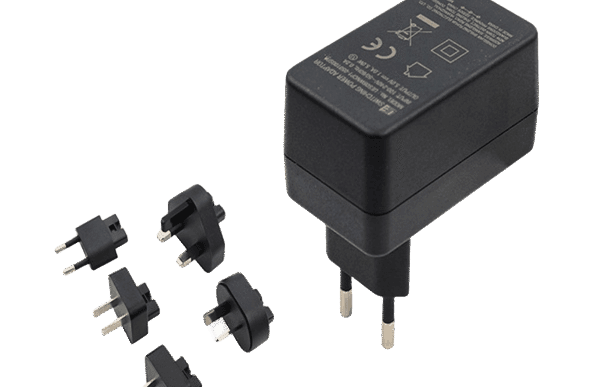Predictive analytics is changing the way businesses operate by helping them make smarter decisions. This technology uses past data to forecast future outcomes, allowing companies to understand trends and customer behaviors better. By analyzing this information, businesses can gain a significant advantage over their competitors. In this article, we will explore what predictive analytics is, its key elements, and how it can be applied across various industries to enhance decision-making and operational efficiency.
Key Takeaways
- Predictive analytics helps businesses forecast future trends using past data.
- It allows companies to make data-driven decisions, improving efficiency and reducing costs.
- By understanding customer behavior, businesses can enhance customer satisfaction.
- Predictive analytics can identify market gaps and inform strategic decisions.
- Companies that use predictive analytics gain a competitive edge in their industry.
Understanding Predictive Analytics
Defining Predictive Analytics
Predictive analytics is a method that helps businesses forecast future events by analyzing historical data. It uses various techniques to find patterns and trends, allowing companies to make informed decisions. By understanding past behaviors, businesses can better predict what might happen next.
Historical Data and Algorithms
To effectively use predictive analytics, companies gather data from various sources. This data is then processed using algorithms that can identify trends. Here are some key steps in this process:
- Data Collection: Gather data from internal and external sources.
- Data Cleaning: Remove any inaccuracies or irrelevant information.
- Data Analysis: Use algorithms to find patterns and make predictions.
Differences from Descriptive Analytics
While descriptive analytics focuses on understanding what has happened in the past, predictive analytics looks forward. Here’s how they differ:
- Purpose: Descriptive analytics explains past events; predictive analytics forecasts future outcomes.
- Data Use: Descriptive analytics uses historical data; predictive analytics uses that data to predict future trends.
- Outcome: Descriptive analytics provides insights into past performance; predictive analytics helps in planning for future actions.
Predictive analytics is not just about looking back; it’s about preparing for what’s ahead. By leveraging data, businesses can stay one step ahead of their competition.
In summary, predictive analytics is a powerful tool that helps businesses understand their data better and make smarter decisions for the future. It combines historical data with advanced algorithms to provide insights that can lead to a competitive edge.
Key Components of Predictive Analytics
Data Collection and Preparation
The first step in predictive analytics is gathering data from various sources, both internal and external. This data must then be cleaned and organized to ensure it is ready for analysis. Here are some key points to consider:
- Identify sources: Determine where the data will come from, such as customer databases, social media, or sales records.
- Clean the data: Remove any errors or duplicates to ensure accuracy.
- Organize the data: Structure the data in a way that makes it easy to analyze.
Statistical Techniques
Once the data is prepared, statistical methods are used to find patterns and relationships. Some common techniques include:
- Linear regression: Helps understand the relationship between variables.
- Decision trees: Visualizes decisions and their possible consequences.
- Logistic regression: Used for predicting binary outcomes.
Machine Learning Models
After identifying patterns, machine learning models are built to make predictions. This involves:
- Training the model: Using historical data to teach the model how to predict future outcomes.
- Evaluating the model: Testing the model to ensure it makes accurate predictions.
- Deploying the model: Integrating the model into business processes for real-time predictions.
Predictive analytics is not just about numbers; it’s about making informed decisions that can lead to better outcomes for businesses.
By understanding these key components, companies can effectively leverage predictive analytics to gain insights and improve their strategies.
Applications of Predictive Analytics in Various Industries
Finance and Risk Management
Predictive analytics plays a crucial role in the finance sector. It helps banks and financial institutions to:
- Detect fraud by analyzing transaction patterns.
- Assess credit risk by evaluating customer data.
- Predict customer churn, allowing for proactive engagement.
Supply Chain Optimization
In supply chain management, predictive analytics is used to enhance efficiency. Companies can:
- Forecast demand to maintain optimal inventory levels.
- Anticipate equipment failures, reducing downtime.
- Improve logistics performance by analyzing delivery patterns.
Marketing and Customer Engagement
Predictive analytics transforms marketing strategies by enabling businesses to:
- Target the right audience with personalized content.
- Analyze customer preferences to improve product offerings.
- Increase conversion rates through tailored promotions.
By leveraging predictive analytics, companies can gain a competitive edge in understanding their customers and market trends.
| Industry | Key Benefits | Example Use Case |
|---|---|---|
| Finance | Fraud detection, risk assessment | Credit scoring models |
| Supply Chain | Demand forecasting, logistics | Inventory management systems |
| Marketing | Targeted campaigns, customer insights | Personalized email marketing |
Enhancing Decision-Making with Predictive Analytics

Data-Driven Strategies
In today’s fast-paced business world, using data-driven strategies is crucial for making better decisions. Companies that rely on data are more likely to succeed. For example, businesses that use predictive analytics can improve their decision-making by:
- Understanding customer needs better.
- Anticipating market changes.
- Making informed choices based on solid data.
Improving Forecast Accuracy
Predictive analytics helps companies forecast their future more accurately. This means they can:
- Anticipate demand for products.
- Adjust their strategies quickly.
- Reduce waste and save money.
Adapting to Market Changes
Being able to adapt to market changes is essential. Companies that use predictive analytics can:
- Spot trends before they become obvious.
- Change their plans based on new information.
- Stay ahead of competitors by being proactive.
By using predictive analytics, businesses can turn data into actionable insights, leading to smarter decisions and better outcomes.
In summary, predictive analytics is a powerful tool that enhances decision-making by providing valuable insights, improving accuracy, and enabling companies to adapt swiftly to changes in the market. This not only helps in making informed decisions but also in gaining a competitive edge in the industry.
Competitive Analysis Using Predictive Analytics
Benchmarking Performance
Predictive analytics allows businesses to analyze competitor data effectively. By gathering insights on competitors’ performance, companies can set benchmarks to measure their own success. This process involves:
- Collecting data on competitors’ sales, marketing strategies, and customer feedback.
- Comparing these metrics against internal performance.
- Identifying areas for improvement and growth.
Identifying Market Gaps
Using predictive analytics, businesses can spot opportunities in the market that competitors may overlook. This can be achieved by:
- Analyzing customer needs and preferences.
- Monitoring industry trends and shifts.
- Evaluating competitors’ weaknesses to find potential gaps.
Formulating Strategic Decisions
With the insights gained from predictive analytics, companies can make informed decisions that enhance their competitive edge. This includes:
- Developing targeted marketing campaigns based on competitor analysis.
- Adjusting product features or pricing strategies to better meet customer demands.
- Planning for future market changes by anticipating competitor moves.
Predictive analytics transforms data into actionable insights, enabling businesses to stay ahead of the competition and make strategic choices that drive success.
| Metric | Company A | Company B | Company C |
|---|---|---|---|
| Sales Growth (%) | 15% | 10% | 5% |
| Customer Satisfaction | 90% | 85% | 80% |
| Market Share (%) | 25% | 20% | 15% |
Operational Efficiency Through Predictive Analytics
Streamlining Processes
Predictive analytics helps businesses streamline their processes by identifying inefficiencies. By analyzing data, companies can:
- Spot bottlenecks in operations.
- Optimize resource allocation.
- Enhance workflow efficiency.
Reducing Operational Costs
Using predictive analytics can lead to significant cost savings. For instance, organizations that effectively use these tools can save up to 20% in costs. This is achieved through:
- Anticipating equipment failures to avoid downtime.
- Improving inventory management to reduce waste.
- Enhancing supply chain logistics for better delivery times.
Enhancing Productivity
With predictive analytics, companies can boost their productivity. By understanding patterns in data, they can:
- Make informed decisions quickly.
- Allocate resources more effectively.
- Adapt to market changes proactively.
Predictive analytics is not just about saving money; it’s about making smarter choices that lead to better outcomes.
By leveraging these insights, businesses can not only improve their current operations but also prepare for future challenges, ensuring they remain competitive in a rapidly changing market.
Challenges in Implementing Predictive Analytics
Computing Power and Expertise
Implementing predictive analytics can be tough because it needs a lot of computing power and skilled data scientists. Many companies find it hard to gather the right resources. This can lead to delays in getting insights from data.
Data Quality and Privacy
For predictive analytics to work well, high-quality data is essential. Companies must ensure that their data is accurate and clean. They also need to follow data privacy laws to protect customer information. Poor data quality can lead to wrong predictions, which can hurt business decisions.
Cultural Resistance
Sometimes, employees may not be ready to trust data over their instincts. This cultural resistance can slow down the adoption of predictive analytics. Companies need to encourage a data-driven mindset among their teams to fully benefit from these tools.
Adopting predictive analytics is not just about technology; it’s about changing how people think and work together.
Summary of Challenges
| Challenge | Description |
|---|---|
| Computing Power and Expertise | Requires significant resources and skilled personnel. |
| Data Quality and Privacy | Needs accurate data and compliance with privacy laws. |
| Cultural Resistance | Employees may resist data-driven decision-making. |
Future Trends in Predictive Analytics
Advancements in AI and Machine Learning
The future of predictive analytics is bright, driven by advancements in AI and machine learning. These technologies will enhance the speed and accuracy of predictions, allowing businesses to make better decisions. As companies adopt these tools, they can expect to see significant improvements in their operations.
Cloud-Based Services
Cloud-based services are making predictive analytics more accessible for businesses of all sizes. This means that even smaller companies can leverage powerful analytics tools without needing extensive infrastructure. Here are some benefits of cloud-based predictive analytics:
- Cost-Effective: Reduces the need for expensive hardware.
- Scalable: Easily adjust resources based on demand.
- User-Friendly: Simplifies the process of data analysis.
Accessibility for All Business Sizes
As technology evolves, predictive analytics will become available to a wider range of businesses. This democratization of data means that even small businesses can gain insights that were once only available to larger corporations. Companies that embrace this trend will be better positioned to compete in their markets.
The future of predictive analytics is not just about technology; it’s about empowering businesses to make informed decisions and seize opportunities.
In summary, the future of predictive analytics is set to transform how businesses operate, making it essential for companies to stay ahead of the curve and adapt to these changes.
Case Studies of Predictive Analytics Success
Retail Industry Examples
Predictive analytics has transformed the retail sector. Companies can now forecast demand and manage inventory more effectively. For instance, Target uses predictive analytics to anticipate shopping patterns, leading to a 10% increase in sales during peak seasons. Here are some key benefits:
- Improved inventory management
- Enhanced customer targeting
- Increased sales during key shopping periods
Manufacturing Improvements
In manufacturing, predictive analytics helps in optimizing production schedules and reducing downtime. Companies can predict equipment failures before they happen, which saves time and money. A few advantages include:
- Anticipating equipment breakdowns
- Minimizing production delays
- Streamlining supply chain operations
Non-Profit Sector Benefits
Even non-profits are leveraging predictive analytics to enhance their impact. By analyzing donor behavior, organizations can tailor their outreach efforts. This leads to:
- Increased donor engagement
- Better resource allocation
- Enhanced program effectiveness
Predictive analytics is not just a tool; it’s a game-changer that helps organizations adapt to the surging demand for data-driven decisions. By understanding trends, companies can stay ahead of the competition and meet customer expectations effectively.
Benefits of Predictive Analytics
Gaining Competitive Advantage
Predictive analytics gives businesses a significant edge by allowing them to make informed decisions based on data. This means companies can uncover hidden opportunities and enhance customer experiences. Here are some key benefits:
- Informed Decision-Making: Companies can analyze data to make better choices.
- Customer Insights: Understanding customer preferences leads to improved satisfaction and loyalty.
- Cost Savings: By anticipating demand, businesses can streamline operations and save money.
Improving Customer Satisfaction
Predictive analytics helps businesses understand what their customers want. This leads to:
- Tailored Services: Companies can offer products that meet customer needs.
- Increased Engagement: Personalized marketing boosts customer interaction.
- Loyalty Programs: Understanding customer behavior helps in creating effective loyalty programs.
Mitigating Risks
Predictive analytics also plays a crucial role in risk management. It allows companies to:
- Anticipate Issues: By predicting potential problems, businesses can act before they escalate.
- Reduce Fraud: Identifying unusual patterns helps in fraud detection.
- Manage Customer Churn: Understanding why customers leave can help in retaining them.
Predictive analytics is not just about numbers; it’s about transforming data into actionable insights that drive success.
| Benefit | Description |
|---|---|
| Competitive Advantage | Informed decisions based on data |
| Customer Satisfaction | Tailored services and increased engagement |
| Risk Mitigation | Anticipating issues and reducing fraud |
Missed Opportunities Without Predictive Analytics
Invisible Insights
Without predictive analytics, businesses often miss out on valuable insights hidden in their data. They operate in the dark, unable to see patterns that could help them make better decisions. For example, a car repair shop without these tools might struggle to identify potential issues and opportunities, leading to higher costs and lower profits.
Reactive Decision-Making
When companies lack predictive analytics, they tend to react to situations instead of planning for them. This can result in losing customers and missing out on new trends. For instance, a retail chain without predictive tools may fail to forecast customer demand accurately, leading to stock shortages or overstocking.
Data Complexity Challenges
The complexity of data can overwhelm businesses. Without predictive analytics, they find it hard to make sense of the information they have. A construction company, for example, might face project delays and budget issues because they can’t predict resource needs or scheduling conflicts. This can lead to unhappy clients and increased costs.
In today’s fast-paced world, not using predictive analytics is like sailing without a compass. Companies that embrace data-driven insights can navigate challenges more effectively and seize opportunities.
Summary of Missed Opportunities
Here’s a quick look at the key missed opportunities:
- Invisible insights lead to higher operational costs.
- Reactive decision-making results in lost customers and missed trends.
- Data complexity can cause project delays and budget overruns.
By not utilizing predictive analytics, businesses risk falling behind their competitors and missing out on growth opportunities.
Conclusion
In summary, predictive analytics is a powerful tool that helps businesses stay ahead in today’s competitive world. By using data from the past, companies can make smart guesses about what might happen in the future. This not only helps them understand their customers better but also allows them to improve their operations and save money. As more businesses start using predictive analytics, it becomes clear that those who embrace this technology will have a better chance of success. In a world where data is everywhere, being able to predict trends and customer behavior is not just an advantage; it’s a must for any business that wants to thrive.
Frequently Asked Questions
What is predictive analytics?
Predictive analytics uses past data to guess what might happen in the future. It helps businesses make smart choices.
How does predictive analytics differ from descriptive analytics?
Descriptive analytics looks at what happened before, while predictive analytics tries to predict what will happen next.
What are some key parts of predictive analytics?
Key parts include collecting data, cleaning it up, and using math and computer programs to find patterns.
In which industries is predictive analytics used?
Predictive analytics is used in many areas like finance, marketing, and supply chain management.
What benefits does predictive analytics offer businesses?
It helps businesses understand customers better, save money, and make faster decisions.
What challenges do companies face when using predictive analytics?
Challenges include needing good data, having the right technology, and getting everyone on board with using data.
How can predictive analytics improve decision-making?
It provides insights that help businesses make choices based on facts instead of guesses.
What might happen if a business doesn’t use predictive analytics?
Without it, businesses might miss important trends and make decisions that hurt their success.













